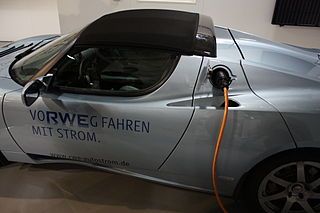Environmentally Friendly Cars
The other day I asked my friend Paul Scott, who co-founded the EV advocacy group Plug-In America and currently sells the Leaf at the Nissan dealership in downtown Los Angeles, about environmentally friendly cars, specifically about the real environmental benefits of electric transportation. This is a trickier subject than may be imagined, given that coal is the least expensive source of baseload electricity, and therefore incremental load on the grid is normally met with coal.
While neither of us is 100% sure what to make of this, Paul has a PV array on his roof, and uses almost no power from the grid – day or night, whether he’s running his refrigerator or charging his Leaf. He’s been at this for a while, too. When I interviewed him at the TV studio in Ventura a few years ago, he arrived in his PV-charged Toyota Rav-4 Electric, before the Leaf became available.
It’s also clear that electric transportation enables us to add more energy from wind to the grid, as we currently have a huge amount of wind at night that faces curtailment or negative pricing.


What we call baseload backup is only available with reliable energy sources. Nuclear energy is the “zero carbon emissions” choice when it comes to justifying electricity used for charging batteries. The US is falling behind other countries in the area of new and improved reactors that help ease the fear factor in an age when fear is a driving force.
Right.
It is interesting that Japan has reversed itself and now plans to build more nuclear power systems. The melt-downs were the result of exceedingly bad decisions made in designing the nuclear plants. Partly because I worked for a Japanese company for 10 years, I can easily understand what happened.
In Japanese culture, criticizing someone or pointing out errors that someone has made, is taboo, especially criticizing someone in a higher position. Thus, when the nuclear plants were being planned and built, people who knew full well that it was a bad idea to locate the Diesel generators where they would be subjected to flooding said nothing and simply hoped for the best. That has been revealed in the investigations.
Actually, it’s a bad idea to design nuclear plants so that when they are shut down, back-up power is necessary to prevent a melt-down. The new Westinghouse AP1000 nuclear plants do not require emergency power to prevent a melt-down. Instead, they have passive emergency cooling that is adequate to prevent a melt-down. Even so, it would be a good idea to move away from pressurized water reactors and use a better nuclear technology.